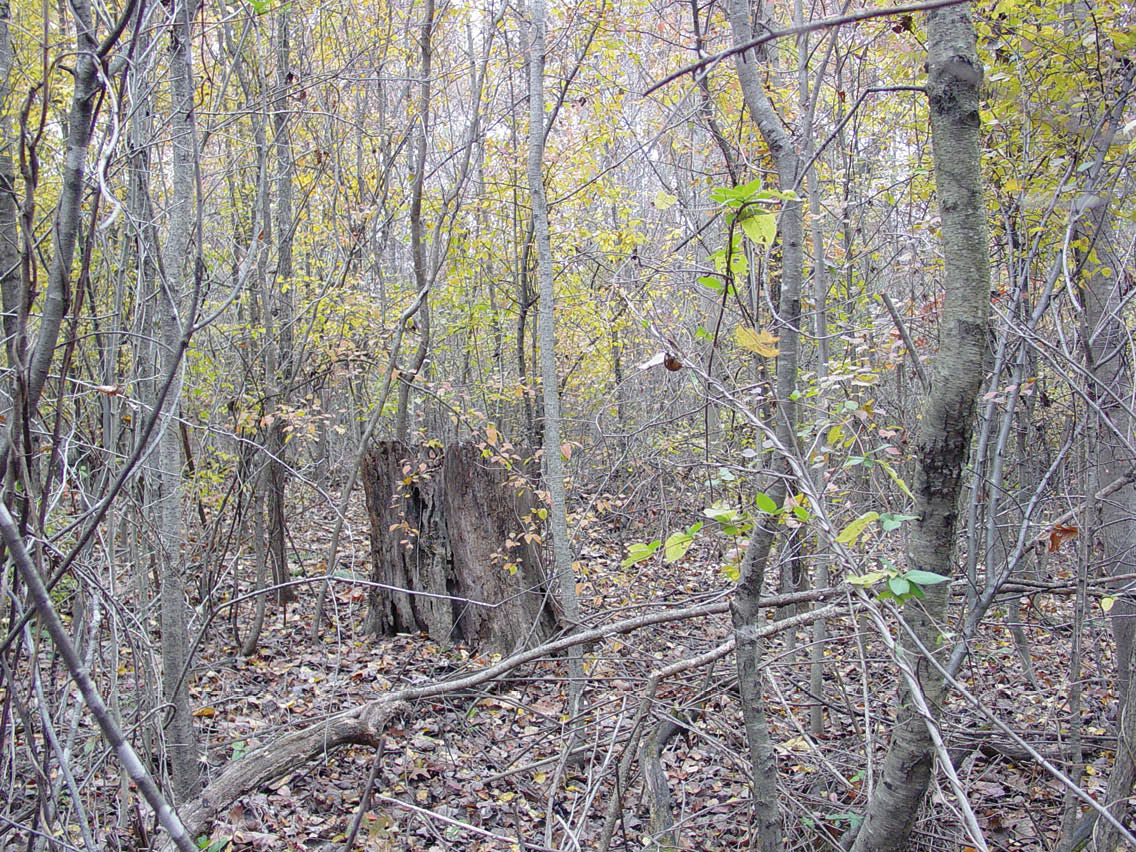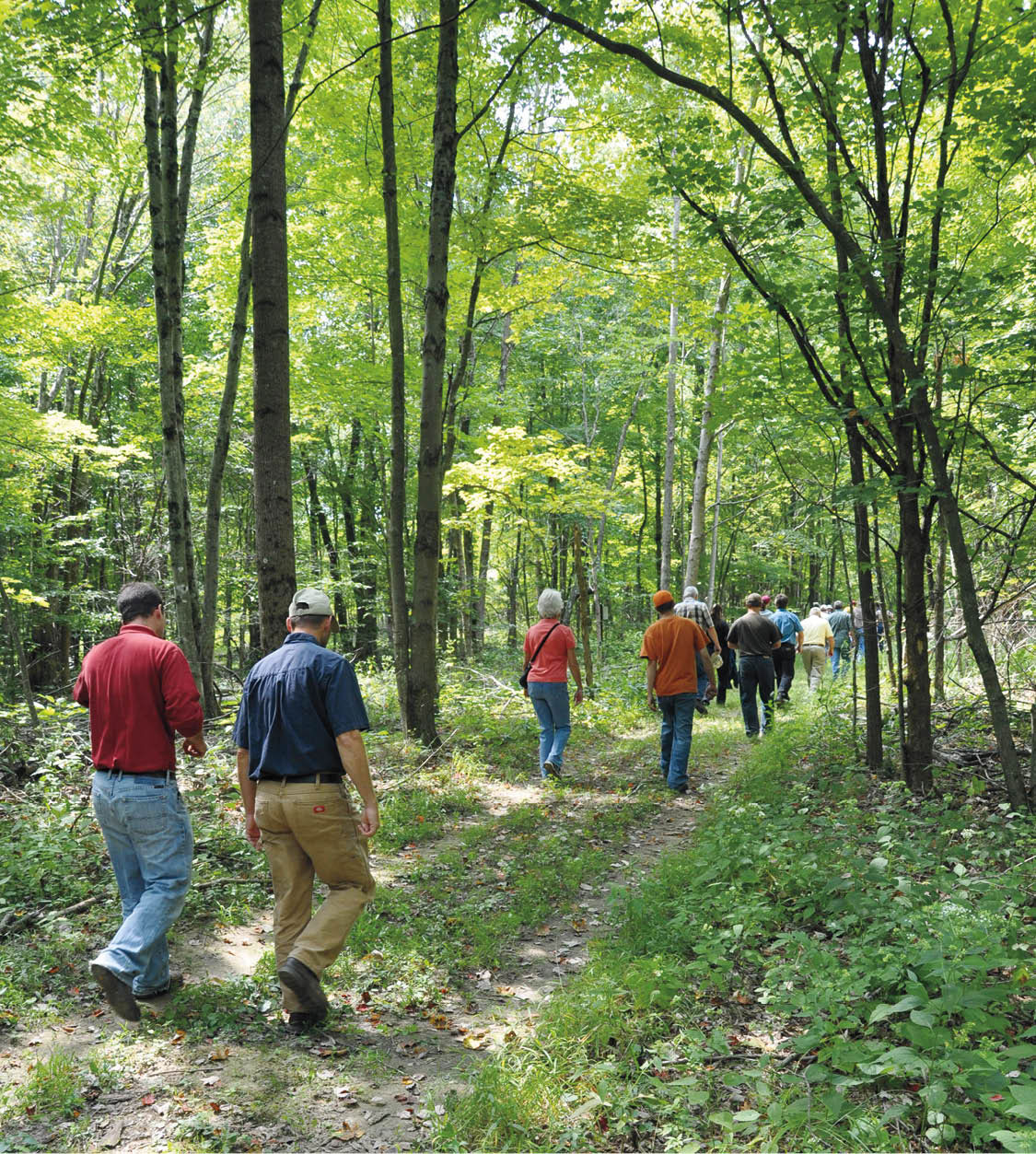Healthy Forests, Healthy Markets
In Indiana, forestry agencies including soil and water conservation districts are focusing on educating landowners on the connection between healthy forests and healthy markets; many landowners there don’t realize that harvesting is the sixth largest industry in the state. Knowing what to harvest when and how it impacts the health of the forest is critical in maintaining the balance.
 “Healthy markets get us healthy forests and with healthy forests you have healthy wildlife; it all goes around and comes back,” Allen County Soil and Water Conservation District (SWCD) Board Supervi sor Tom Crowe said.
“Healthy markets get us healthy forests and with healthy forests you have healthy wildlife; it all goes around and comes back,” Allen County Soil and Water Conservation District (SWCD) Board Supervi sor Tom Crowe said.
“The more you can teach landowners, the more you get them thinking and they realize it’s not just harvesting trees, it’s harvesting the right trees and creating habitat and the whole picture,” Crowe said. “You can have it all if you do it the right way.”
This year, the Natural Resources Conservation Services (NRCS), National Wild Turkey Federation (NWTF) and various SWCDs came together to host a roundtable discussion at the annual conference of Indiana Soil and Water Conservation Districts center ing on how proper forest management can go hand- in-hand with improving wildlife habitat, sustaining ecological communities and improving future markets.
More than one-fifth of the land in Indiana is made up of forests, and more than 85 percent of those are privately owned. Those landowners have a myriad of forestry concerns: changes in land classification has increased property taxes; invasive species can have a high and persistent cost; there have been disease and insects that have claimed acres of forestland; and many landowners have seen losses to environmental factors including heavy storms, more droughts and climate change.
“Forestry practices are sometimes less immediately evident,” NWTF National Forestry Initiative For- ester – Indiana, Amy Spaulding said. “Initially, some practices, like treating invasive species, thinning out less desired trees or prescribed burning may not be as aesthetically pleasing, however, they are import- ant for forest health, the wildlife that depend on them and for our future economy.”
Education around the big picture is key in helping landowners create forestland that falls in line with their goals and desires, whether that is recovering from losses incurred from storms or clearing out understory and thinning the land.
“There is a stigma with some groups in Indiana that cutting down trees is always a negative process, and there is a misunderstanding that forest management means destruction of forestland,” Indiana Association of Soil and Water Conservation Districts Executive Director Joe Schmees said.
“Overcoming this type of stigma with landowners is important. Providing examples of how forest management can lead to habits that promote healthy ecosystems can enhance recreation opportunities instead of hurting them,” he said.
There are 4,500 companies across Indiana involved in forest harvesting, according to 2020 State Forest Action Plan data. The industry generates $10 billion annually and provides 70,000 jobs. By assisting landowners in forest management, the industry has contributed to the recovery of some of the most abused forests, transitioning them into healthy stands. In fact, 80 percent of the state’s 5 million acres at some point in the past century fell into that “abused beyond repair” status. Today, with proper management, which includes harvesting, the forests have returned.
But it starts with a management plan. Currently, less than 20 percent of forest landowners have a management plan, and what they don’t realize is that because of that, their forests are operating at about 50 percent of their productivity.
The SWCD in DuBois County is pulling out all the stops in its efforts to educate the landowners there on a broad scale that encompasses nearly every aspect of forest management.
“Our forestry committee holds field days and encourages landowners to work with professional foresters,” Executive Director Judi Brown said. “We have forest management tours to show people the proper practices to use, including chainsaw safety training, invasive species control, using tree-selection harvests rather than diameter-limit harvests, and the importance of working with a forester. You have a professional looking at the health of the forest as a whole rather than the value of individual trees.”
In Porter County, the district is reaching out to women, as well. This summer, the SWCD sponsored a womens’ workshop that centered on forest management and taking the first step in achieving a healthy forest: controlling invasive species.
“We regularly receive calls from folks interested in woodland management but getting from the planning stage to the actual implementation is not always easy,” SWCD District Administrator and Educator Michelle Benson said. “There are a number of hurdles folks encounter and making it to the finish line often requires a lot of time, effort and persistence.”
There are few companies in the county equipped to handle proper invasive species management, she said. Directing landowners to financial resources is one route, but funding can be limited and the applications do not always translate into contracts.
Porter County SWCD has gone so far as to partner with neighboring LaPorte County SWCD to form an invasive species management group to conduct more outreach specifically targeting invasive species. Invasive species are a top hinderer of healthy forests; rampant invasives can kill trees, and at the least can cause tree deformities which significantly affect the quality of trees available for top-dollar harvesting.
In Crowe’s neck of the woods, around Fort Wayne, he helps connect landowners with companies in order to sell their “junk” trees, so not only do the landowners gain a bit from a sale; they are freeing up tracts to open the forest and provide healthier growing conditions.
“Most landowners don’t know what they’ve got,” Crowe said. “There’s a big disconnect between management and how to market. We’re lucky. We have a lot of diversity and a lot of markets including low-grade mills, so we can easily go in and low- grade, which just keeps increasing the value in the wood and the productivity.”
Establishing and then following a forest management plan is the first step, though. Then, in whatever the landowner hopes to achieve, thinning and dis- posing of less-desirable trees ultimately will make the forest stronger and contribute to the economy, whether it’s a low-grade $20 tree or two larger ones that together go for upwards of $200,000, Crowe said. “It stays as a wood and you get the wildlife, the water quality, the air quality – all of the benefits go with it,” he said. “Everything is intertwined with healthy forests in the middle.”
This article was originally published by the National Association of Conservation Districts (NACD) in the Autumn 2021 issue of National Woodlands and is reprinted with permission. The National Association of Conservation Districts (NACD) is the 501(c)(3) nonprofit organization that represents America’s 3,000 conservation districts. Conservation districts work with millions of cooperating landowners to help them manage and protect land and water resources on private and public lands in the United States. Visit us at: www.nacdnet.org/about-nacd/what-we-do/forestry-2/
